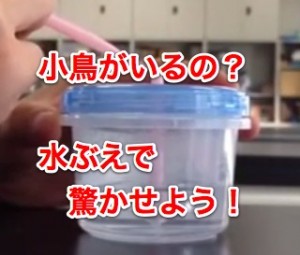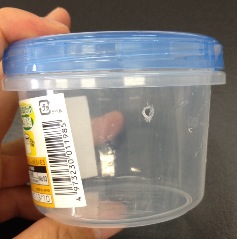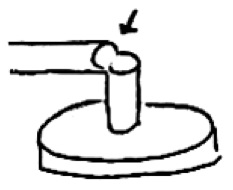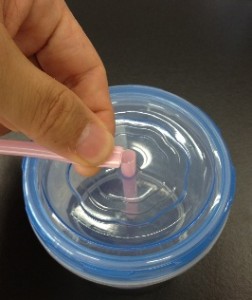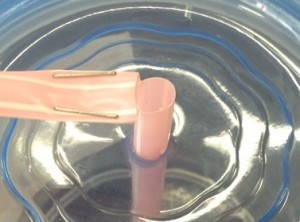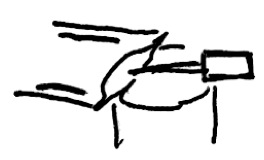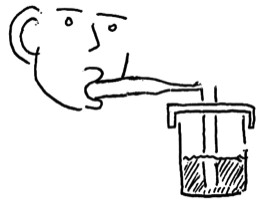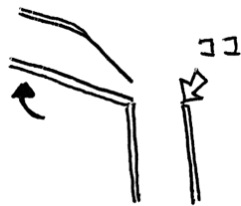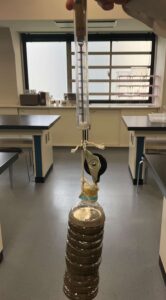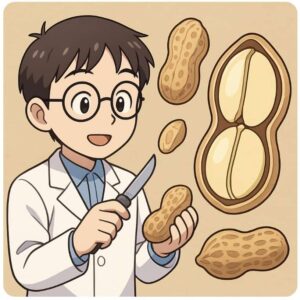Chirp, Chirp, Chirp! Make a Flute That Sings Like a Little Bird! (How to Make and Play a Water Whistle)
I’m Ken Kuwako, a science trainer. Every day is an experiment.
Let’s make a straw flute that chirps like a little bird!
Does a straw really chirp like a little bird?
Chirp! Chirp, chirp!
Today I’m going to show you a flute made from a straw that sounds like a little bird. You’ll be amazed when you make one yourself! First, listen to the sound it makes in this video.
What do you think? It really sounds like a little bird, doesn’t it? When I was doing this experiment, a teacher from the next classroom came into my science lab with a puzzled look and said, “I thought I heard a bird!” This is a great learning experiment even for high school students. Be sure to try it at home!
Science Recipe
What you’ll need:
Plastic container (a soft lid is recommended), straw, scissors, stapler
How to make it:
① Make a hole in the center of the container lid for the straw to pass through
First, use an awl to make a small hole in the lid of a plastic container, like the kind you can buy at a 100-yen shop.
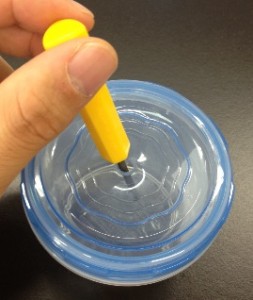 Then, insert a pencil to make the hole bigger. Aim for a hole just large enough for the straw to fit through. This might require a little force, so ask an adult for help.
Then, insert a pencil to make the hole bigger. Aim for a hole just large enough for the straw to fit through. This might require a little force, so ask an adult for help.
② Make a hole in the side of the container
As shown in the next image, use an awl to make a hole on the side of the container, slightly above the center. This hole should remain small. Later, you’ll put water in the container until it’s about halfway full.
② Insert the straw until it touches the bottom of the container and make a slit
Insert the straw into the hole you just made. The straw should reach the bottom of the container. 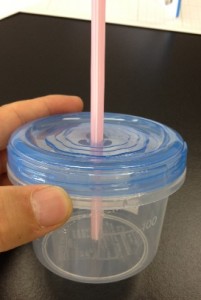
Make a slit in the inserted straw about 1 cm above the container lid, as shown in the image.
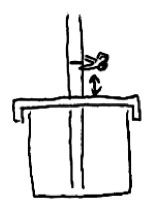
And fold it over.
Since you’re just making a slit, be careful not to cut all the way through. The idea is to make a slit so it’s still attached by a thin layer of plastic.

③ Strongly flatten the straw
As shown in the next image, pinch the base of the folded part with your fingers to flatten it.
④ Staple both sides of the flattened section
Staple both flattened sides in two places as shown in the image. This part can be a little tricky.
After stapling, use the tip of the awl to slightly open up the middle of the straw so a small amount of air can pass through (you are not making a new hole with the awl).
⑤ Fill the container with water and blow into the straw
Fill the container about a third of the way with water, put the straw in your mouth, and blow into it. Here’s the trick! Aim your breath at the slit you made in the straw.
Aim for the spot marked “Here” in the next image.
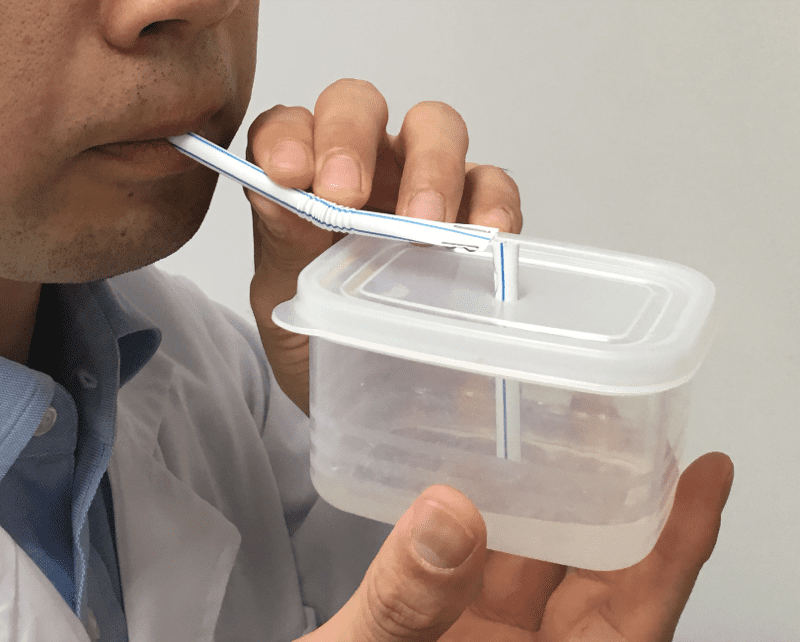
Try blowing at different angles. If you do it right, you’ll hear “Chirp, chirp, chirp!” and the straw will start chirping like a little bird, just like in the video.
Why does it sound like it’s chirping?
This flute is a homemade version of a water whistle, which are often sold at festivals. It is a type of musical instrument called a closed-end tube. In a closed-end tube, the air particles (air column) create a standing wave, and the straw resonates to produce a “peep” sound. It’s the same principle as when you blow air forcefully across the mouth of a beer bottle to produce a low, whistle-like sound.
However, unlike a beer bottle, which produces a single sound because its length is constant, the water level inside this flute changes. When you blow air, the pressure at the top of the straw decreases, which causes the water level to rise and then fall again. As the water level constantly changes, the length of the air column inside the straw changes, too. This is the same phenomenon as adjusting the length of a trumpet’s slide, which is why the sound “chirps” and changes pitch.
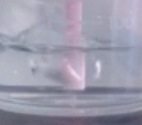
About Inquiries and Requests
Discover the wonder and fun of science in a more familiar way! I’ve put together easy-to-understand explanations of fun science experiments you can do at home and tips for them. Please feel free to search for more!
・For more information about the operator, Ken Kuwako, click here
・For various requests (writing, lectures, experiment classes, TV supervision, appearances, etc.), click here
・Article updates are delivered via X!
![]() The Science Channel delivers experiment videos!
The Science Channel delivers experiment videos!

